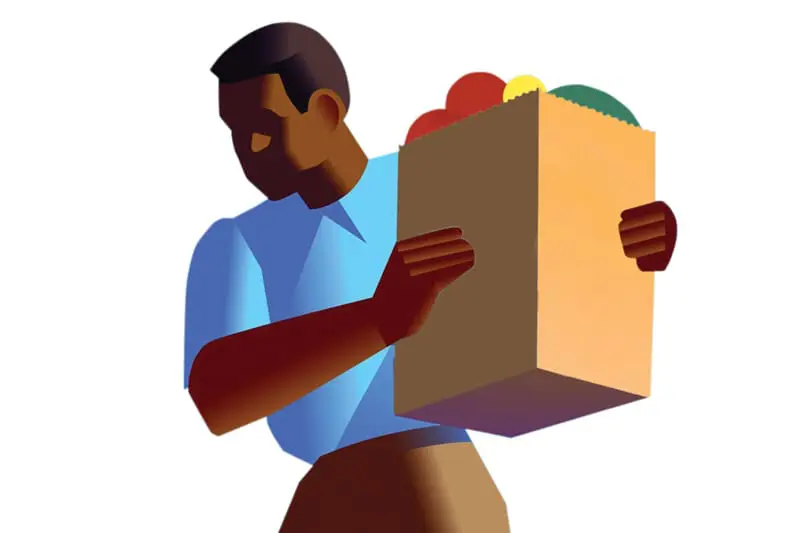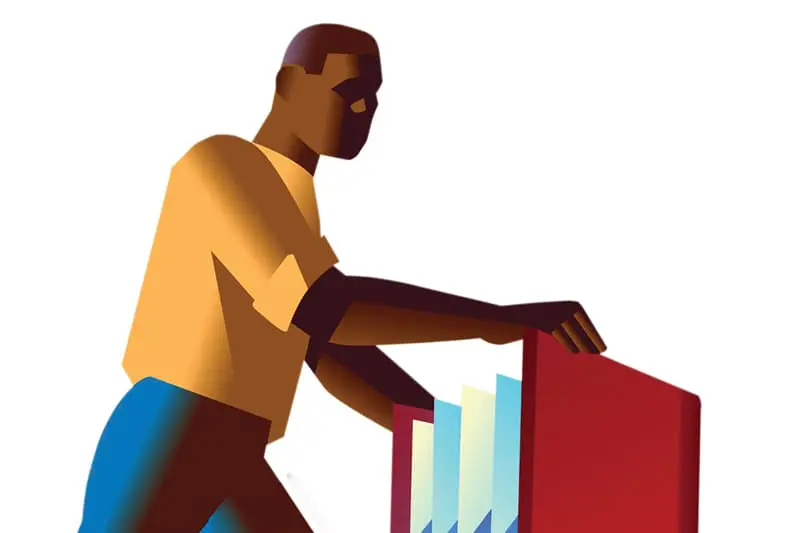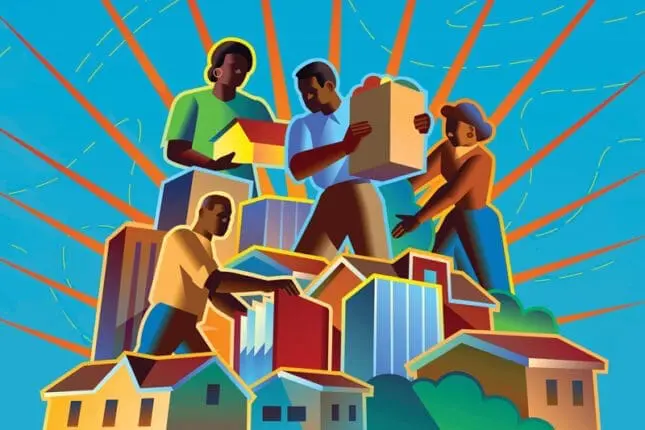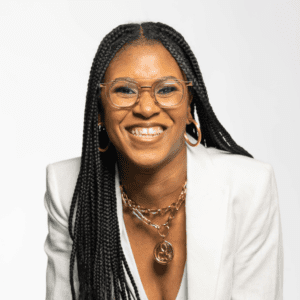Since the uprising following George Floyd’s murder and then COVID’s devastation of communities of color, the therapy world has undergone a shift: practitioners are more eager to do the once fringe work of decolonizing mental health for Black clients to provide treatment that truly heals them. I know this because I offer a training on this topic, and it’s exploded in popularity. But as exciting as it is—and believe me, I’m thrilled that we might finally be putting truly liberatory therapy to use on a large scale—our trainees are discovering that the real job in front of them is not for the faint of heart.
True liberatory therapy training leaps headfirst into the history of systemic oppression in the United States and how the harms endured by people of African descent remain unaddressed—even at times maintained—by our profession, which was established and is still overseen by white folks. We dig into how the therapy world continues to favor working with individuals apart from their community and the many ways this inhibits the healing of Black folks, who rely on community as a main source of support in a world that’s long been hostile to them.
But training must go beyond the intellectual exercise of just grasping these concepts. Instead, the real work of these practitioners—getting out of their chairs and going into surrounding communities to do something about it—has just begun.
A Communal Force
My trainee Victoria is white and based in Chicago. Her client Jackie is Black and a new mom, who’s been struggling with overwhelming sadness and anxiety. Though Jackie was initially excited to have gotten pregnant after trying for some time, the ongoing violence toward Black people in America, and her recent shift from being a high-achieving professional to an overwhelmed mom at home with a newborn, have left her feeling adrift.
Not only is Jackie now raising a Black child, but she no longer feels like the person she thinks others still need her to be: a super productive Black woman who can handle anything. She tells Victoria she’s worried about asking for help anywhere but in therapy.
“I don’t want to seem needy,” she says. “I’ve always been seen as strong and capable of tackling anything, you know? If I told my family and friends how I was feeling, I’d be letting them down.”
Through our training, Victoria has learned about the Superwoman Schema that’s at work in Jackie and many Black women like her. And she’s become aware of the original healing ways of Black folk, and the practice in the Black community of finding ways to offer one another mutual aid—things like food and housing, but also healthcare, advocacy, and emotional support when necessary—as a means of collective liberation.
Nudged by our work together, Victoria began unpacking the hard truths about her own white saviorism. In many ways, she’d been providing support for nonwhite people in a self-serving manner—wholeheartedly believing that she knew what Black folk and other people of color needed, even though she’d never asked.

As I guided her cohort through a series of deep reflections about their ancestral lineage and their relationship to the benefits of capitalism, ableism, racism, and classism, Victoria wrestled with shame, guilt, anger, and resentment, which she processed with one of our coaches, and with the growth partner she was paired with in the training.
Victoria struggled with this process for several months, and disengaged from us more than once. When she returned, she wanted to know more about how to build community connections, and we went over the difference between rapport building—common in the transactional, time-limited engagement of therapy—and relationship building, where the goal is ongoing, genuine connection.
She’d already been to local community events and discovered some grassroots initiatives. Now, ready to deepen her connection to Jackie’s experience, she became a regular at a local, cooperatively and Black-owned coffee shop and bookstore, and began supporting the co-op’s weekly farmers’ market.
As casual conversations at the market and store became more intimate, Victoria became privy to an entire community of healers she never knew existed. She met a woman who holds a healing circle where she teaches embodiment techniques, like centering breathwork and yoga. This woman introduced her to others creating spaces of connection at art studios and hosting events on Zoom to talk about pressing political issues. While some of these events were established as safe spaces especially for Black people, others were open to all like-minded people passionate about radical social change.
One day as she sorted supplies at the co-op, she learned there are even organizations founded specifically for new mamas, where elders preserve the African traditions of birth work—special meals to support recovery after delivery, belly binding, naming ceremonies, even herbal remedies that can help new parents relax.
Victoria was thrilled to realize that resources for Black folks and other people of color already existed in her community. They’d never appeared on any of her professional organizations’ lists for referrals!
Because we provide our trainees with research about how Black women cope, including studies that show that cognitive-emotional debriefing in a village of support leads to a greater reduction in stressors, Victoria knows Jackie’s Blackness is a defining part of her existence. So instead of limiting therapy to a clinical focus on her depression—they’d already been working on compassionate self-talk and discussing the possibility of medication—she said, “What do you think about connecting with people in the community who can understand and hold your pain? I have some ideas I can share with you.”
Jackie thought about it for a moment, and then realized the idea of being held by people who might understand her particular struggle bathed her in relief.
As Victoria told our training group, it was an ironic but powerful victory to refer Jackie to the community and provide her with the kind of holistic, ongoing support that she knew their individual therapy couldn’t deliver on its own. As a result of the trusted connection Victoria now has in their community, she has greater confidence in this community-based referral, and Jackie has an extended well of support on and off the couch.
“I’ve stopped believing you need to make referrals to large, established institutions,” Victoria told us. “And I’m retiring my bias that nonclinical healing isn’t powerful enough for our clients. These community options can be healthier than we realize. They engender greater self-determination and self-respect.”
In fact, her time at the co-op and her growing understanding of how mutual aid works is changing the very way she operates in the world. “I’m now giving lots of thought to which aspects of myself I show others in my daily life. Is my professional persona necessary when I’m out in the community? Why do I feel I need to stay at a distance? What if I don’t just use my skills in my office but also in this village of mine—with the people that live around me?”
Other recent trainees are having similar awakenings. After attending a community boxing class where abuse survivors safely addressed their feelings of disempowerment, Christopher felt he could recommend Taekwondo to support Black men processing trauma. Donna, a young Black therapist, researched the original healing ways of her formerly enslaved ancestors. Now she’s pairing some of her therapeutic modalities with African dance to help somatically heal her clients’ trauma.
Aren’t You Separate from Your People?
Early in my social work career, I worked in a residential treatment center with mostly African American boys. I loved the work, but it was clear that the white people on the clinical team too often made decisions based on their own fears and assumptions about these boys, which were rooted in concepts about the inferiority of Black folks. They weren’t supporting the boys holistically and time and again trivialized their pain.
Leslie was a white social work colleague on staff, who really loved the children we served. One day a boy named William said to her, “I wish I could be white like you.” Considering his personal history in the context of our society, it made sense. His own biological mother had physically abused him, as had other Black moms in the child welfare system. Mainstream media told him Black violence is a mainstay of the community, and no one had educated him on the true context of systemic violence in our country.
Yes, he hadn’t experienced the nurturing he needed from Black women, but neither had anyone assured him that not all Black people were harmful. The idea was now so ingrained in him that he was starting to attack Black women on staff. When he saw his white therapist, he associated her with purity and compassion.
Leslie pulled me aside and asked my advice. Alongside the grief and trauma that he was reenacting, I asked her to consider the generational and historic trauma that was in play in his life. “You’re going to need to do some things differently to be able to hold space for his healing,” I said. “It’s not going to be enough to just say something supportive about his self-esteem. You’ve got to explain that he comes from a lineage of strong, courageous, loving people in history. That it’s a miracle he exists. Then you need to connect him to other Black folks and the community, so he can see some positive images of himself.”
She blanched and said to me, “I don’t know, Shawna, I don’t think that he needs to hear all that from me.” Then she confessed that she wasn’t comfortable having to address racism with William. “How can I connect him to a community I’m not a part of? Can’t you do that instead of me?” she asked.
Beginning to understand how little she knew of Black life, I encouraged her to educate herself about the ways society’s messages can impact a child’s self-concept. I told her to read Joy DeGruy’s book, Post Traumatic Slave Syndrome, where she discusses how Black Americans are often hampered by multigenerational trauma, continued oppression, and an absence of access to many of society’s benefits, including professional healing. She could even bring it to the DBT study sessions we staff were having, to explore how we could embed these insights into the modality we used.
Watch our interview with the author
She ultimately chose not to do any of these things, nor to address with him what he’d said to her. Further, she opted not to write about it in her clinical report.
I thought it was unethical of her to bury something that could become a part of this child’s racial identity development, overall wellness, and mental health for the rest of his life, but I didn’t want to throw my colleague under the bus. So I went to my supervisor, and we agreed I’d facilitate activities in group therapy that allowed for discussion of stereotypes and popular culture.
During the group, I supported William in expressing his deep-seated ideas about Black women, and we analyzed how mainstream media narratives affected the kids’ concepts of self. When it came time for them to draw a self-portrait, his image of a child who had pearly white skin rather than his own deep brown led to these ideas being further addressed in individual therapy.
I ended up co-facilitating a full staff training on Post Traumatic Slave Syndrome, and we reviewed why, to care for their clients properly, it was necessary that all clinicians make a personal commitment to do work around race and oppression.
All our clients have their own systems of healing and innate knowledge that can be tapped to strengthen mental health. Racism, sexism, and Eurocentric approaches to health have separated therapists from this kind of knowledge. If we want to do good work now, we’ll need to train therapists and future therapists alike to get to know clients’ communities, rather than expecting clients to educate us about them.
Waking up to Shared Hardship
As a child, I wanted to be a neurosurgeon. The human brain fascinated me, and I believed what the wider culture taught me: that our minds were essentially all the same mappable universes made up of similar experiences. Tinkering with them with the help of specialists had to be how healing happened.
But the more I saw how people struggled differently in life, based on what they do or don’t have, or how the wider culture views them, I realized what I really wanted was to work with my people, not just the organs in their heads.

My first aha moment was as a freshman in college, when I was taking a course called Black in American History and my professor told us, “Question everything you know. Then question why you think you know it.” He offered extra credit to students willing to do hurricane relief work during spring break, and then report on their experience.
This was about a year after Hurricane Katrina, and I was eager to contribute meaningfully to the Black community. On the trip—my first ever on an airplane—we walked across the Edmund Pettus bridge in Selma, Alabama, and then visited the site commemorating the four Black girls killed in the bombing of the 16th Street Baptist Church in Birmingham. I was still a teenager taking this all in. It was so much—too much.
Our last stop was the longest. We had plans to work with the Red Cross and FEMA in the Lower Ninth Ward of New Orleans. When this amounted to sitting on tour buses viewing destroyed homes and businesses while eating bagged lunches, a couple of friends and I decided to ditch the entire operation. We began talking to the local people, asking them what they needed and how to find the people who were actually doing good work.
They led us to a grassroots initiative organizing in the neighborhood. That week, we worked to identify which families were still in their homes, and who needed food, shelter, or support finding a family member. We created a spreadsheet with ways of identifying folks beyond their addresses. We picked up food from organizations and delivered it to those still struggling.
Every day, we heard the horror stories of families who hadn’t had the resources to evacuate and didn’t trust a government that had failed them so many times; and we learned about the different levee systems and how socioeconomic status dictated their effectiveness, and the provision of support.
I quickly realized that if I was from New Orleans, these Lower Ninth Ward families fending for themselves could easily have been mine. I began to understand how the same kinds of struggles I saw rip through my Baltimore community were part of the reality of a pre-Katrina New Orleans. The hurricane just exacerbated the pain of an already neglected community. I’d later wake up to the fact that Black people in the United States, no matter the city, struggled similarly.
It shouldn’t take another in a long line of lethal catastrophes to wake us up to what’s happening in our society. The stories of those most marginalized ought to guide the way we offer care, and their healing should become what we deem evidence of good therapy.
The Danger of Disbelieving Clients We Don’t Understand
When clinicians aren’t engaged in their clients’ communities, they can’t understand how community members deal with each other, nor how people in power in this country deal with these communities. That means they’ll have few points of reference for their clients’ realities. This can lead to pathologizing behavior. It can also lead to blaming the clients themselves for deeply upsetting things that are happening to them—sometimes with tragic ramifications.
A few years ago, my brother was jailed for low-level drug charges. Again and again he was supposed to get out, but because he’d reported correctional officers when they’d mistreated him, time kept getting added to his release date.
Just before we thought he was going to come home, our family—my sister, brother, father, aunt, and I—visited him in jail. From across the table in that cold, echoing visitors’ room, he leaned in and said, “They’re going to kill me in here. Y’all gotta get me out.”
He shared with me that a therapist had diagnosed him with paranoia while he was there, but I’d never seen any documents about such a diagnosis. He was nervous and said he was both having therapy sessions and being medicated. Then he told me again, “They’re saying that I’m tripping, but I think they’re gonna kill me in here.”
We all hoped this was paranoia talking. I remember, before getting up to leave, saying to him, “Listen, Darrell. Just shut up, please, and follow directions so we can get you home. Because we can’t do anything about these systems while you’re in them.”
That was the last time we saw him as his full self. Shortly after, my family got the dreaded call that he was unresponsive.
We eventually learned that my brother was correct: his cellmate and the correctional officers had worked together to end his life. But truly, everyone is guilty. The institution itself has blood on its proverbial hands. The system killed him.
As in so many institutions, correctional systems are protective of their own, so there was no way to speak with the therapist, or even identify who the therapist was. My greatest hope is that one day this therapist happens upon my work and begins to think more critically and holistically about their work.
A Private Practice that Lets the World In
When I started my private practice, I was determined to create an environment in which I could do the work that I felt was healing for every client. This meant taking into context the historical oppressions that children and families of color often endure, while correcting the work of well-meaning but harmful practitioners who are trying not to ruffle any feathers.
Many therapists may still balk at the idea of leaving the confines of their individual practices to go into communities in search of nontraditional resources for Black clients. But I’ve noticed that after the events of the last couple of years, it’s changing. My concern now is about sustaining their commitment to working in this way.
Initially, the training I provided was just supposed to be for an intimate group of 25 local therapists in Baltimore. I wanted more therapists to refer to in the area who understood a liberatory framework and would be willing to establish community. This last year alone, we’ve trained more than 500 countrywide. Half of the trainees are white, and half are people of color. It’s been intense for all of us, especially the growth assessments where we go in depth with them and really evaluate how they’re applying what they’ve learned.
Imagine with me a world where all therapists are trained this way. A world where you ask the communities you serve what they need and then offer it, instead of presuming expertise on the lived experiences of others. A world where genuine connection to your local community mirrors back not only sameness, but difference—where you can be in relationship with colleagues who will draw you into the depth of this lifelong work, and you cultivate the endurance to stick with it.
Perhaps you can even imagine yourself becoming that practitioner whose first thought when asked for a professional referral isn’t, “Which of my colleagues is best at these Axis 1 diagnoses?”—but rather, “Hey, can I help my client find this healing through their community?”
The truth is, we all deserve a therapy that liberates, but it might just require all of us to grasp that true healing is not a solo endeavor.
ILLUSTRATION © ILLUSTRATION SOURCE/NIKOLAI PUNIN
Shawna Murray-Browne
Shawna Murray-Browne, PhD, LCSW-C, is an author, cultural historian, integrative psychotherapist, and liberation-focused healer. She’s the keeper of sacred space especially for women leaders, globally, working at the intersection of social impact and embodied ancient wisdom. Featured on PBS’s Mysteries of Mental Illness, she’s one of HuffPost’s “Ten Black Female Therapists You Should Know.”













